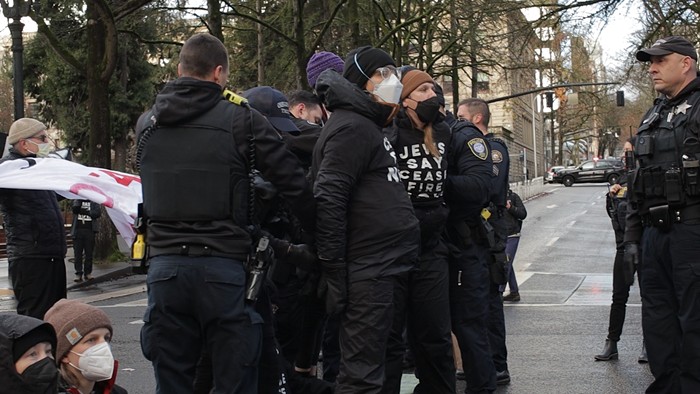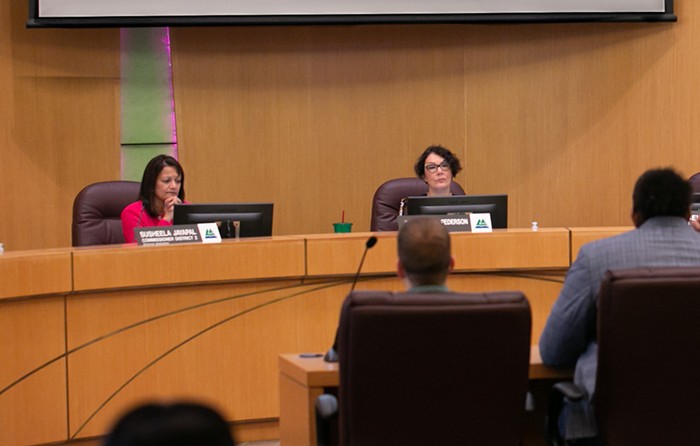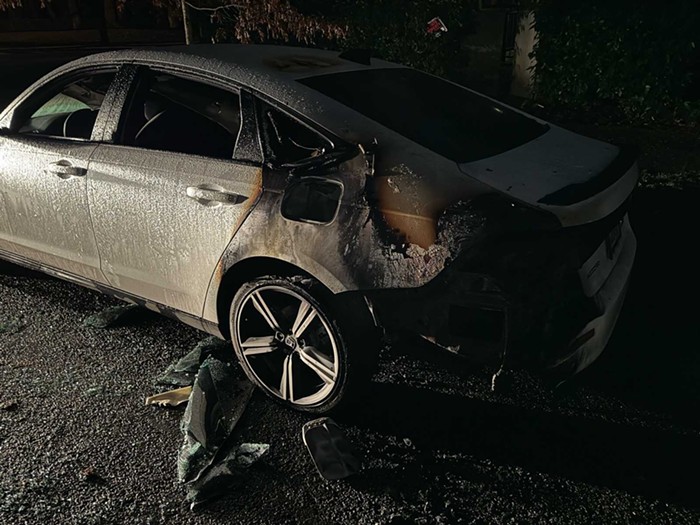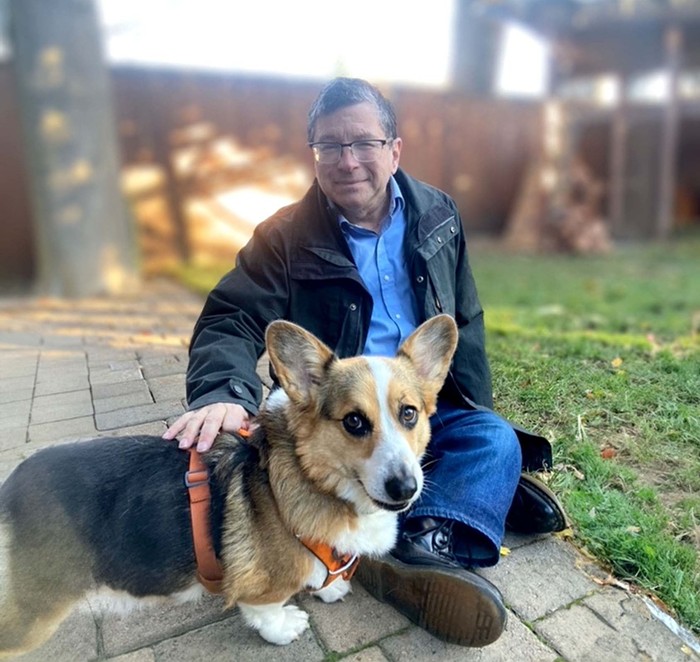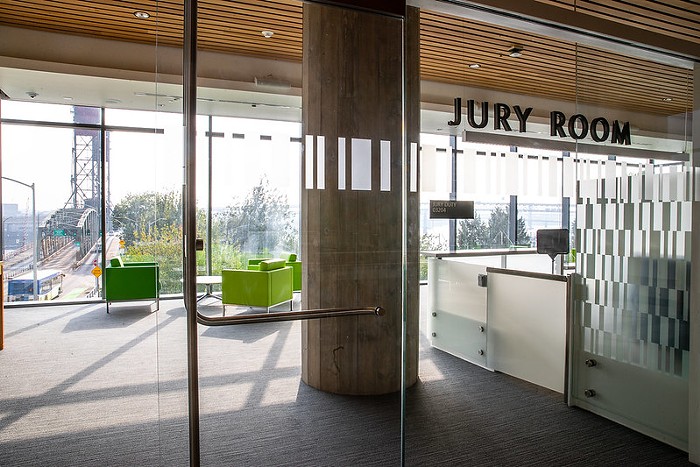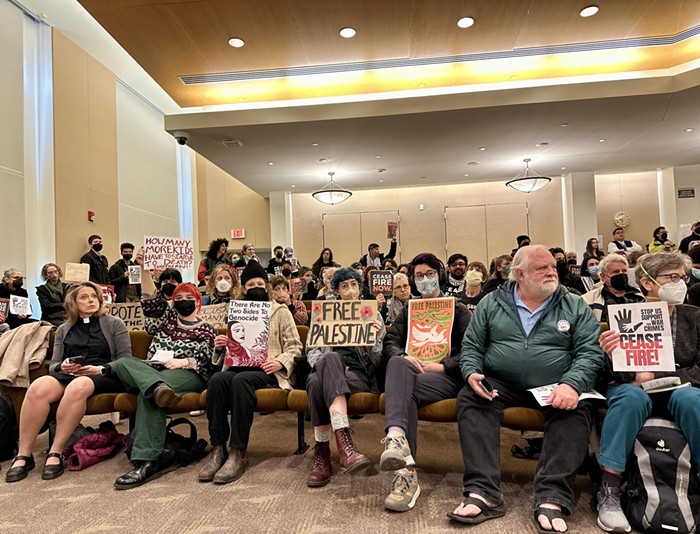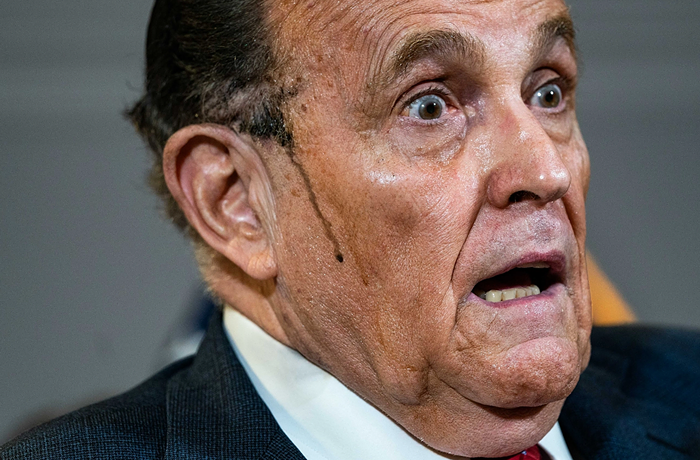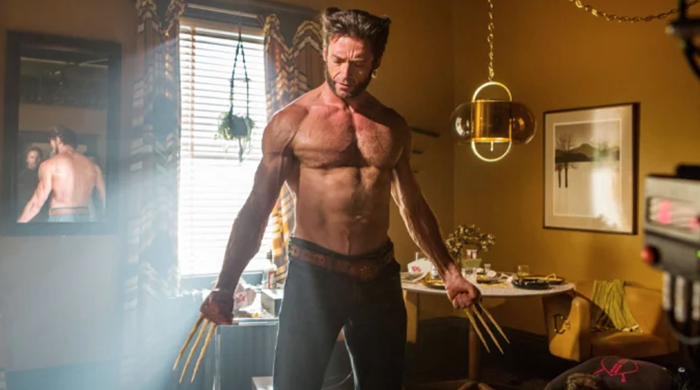
After a year of analysis and two pedestrian deaths, the Oregon Department of Transportation (ODOT) is lowering the speed on 82nd Avenue, one of Portland’s deadliest highways.
ODOT is proposing a permanent speed reduction from 35 to 30 mph on 82nd between NE Killingsworth to SE Clatsop, as well as the installation of ten digital speed reader signs. This proposal, announced Friday, comes one year after the Portland Bureau of Transportation (PBOT) requested the speed reduction from ODOT. In the time that ODOT has taken to analyze the potential impact of reducing the speed, two pedestrians—Stephen Looser and Anthony Tolliver—have been struck and killed by drivers on 82nd. Looser and Tolliver were killed two weeks apart in April and within 180 feet of each other. Both men were hit at night on a portion of 82nd that only has street lamps on one side of the street. ODOT’s proposal includes improved pedestrian crossing lighting and signage near NE Alberta St. where both pedestrians were killed, as well as several other points along the corridor.
The proposed $3.35 million in improvements for 82nd avenue are part of a $10 million statewide pedestrian safety project. The Oregon Transportation Committee will need to authorize the funds this Thursday, May 13, for the projects to move forward. If authorized, ODOT expects to complete the projects by this fall.
While transportation safety advocates applauded this decision Friday, they characterized it as a fractional step towards the major investments that 82nd and other historically unsafe Portland thoroughfares will need to become thriving, community-centered streets.
The announcement of these pedestrian safety efforts came less than four hours before a rally scheduled for Friday afternoon, where community members had planned to demand emergency safety improvements on 82nd. The online rally, hosted by safe street advocacy group Oregon Walks, was in reaction to the pedestrian deaths on 82nd and featured transportation advocacy groups, community members, and elected leaders.
“I know today that announcement wasn’t an accident,” said Portland City Commissioner Jo Ann Hardesty, who oversees PBOT, during the rally. “It happened because [ODOT] knew that we were organizing, that we were going to put pressure on them, and that we were no longer going to allow the platitudes. That's why that announcement came today. Don't let anybody tell you anything different.”
While the event celebrated ODOT’s proposal, the speakers stayed focused on a central demand for ODOT to invest in more infrastructure improvements to 82nd and transfer ownership of the avenue to PBOT.
ODOT currently owns and maintains 82nd because it is a state highway. State highways like 82nd Avenue, Powell Boulevard, Barbur Boulevard, and more were originally built to cut through rural areas and connect urban hubs, but, as the city expanded around the highways, they now act as major thoroughfares that cut through populous areas. Transportation safety advocates and elected leaders have long called for the jurisdictional transfer of these highways from the state to the city with the hope that PBOT, which has more rigorous safety standards than the state, will be able to keep the streets in better condition. Both PBOT and ODOT are receptive to the proposal, but not the price tag.
It’s ODOT’s responsibility to keep the state highways in a “state of good repair,” which simply means that the highway needs to be performing as intended. Because ODOT prioritizes the maintenance of statewide thoroughfares like Interstate 5 over highways that serve smaller, localized populations, ODOT is always playing catch-up when it comes to maintaining state-owned highways in Portland. As it stands, 82nd would need significant repaving efforts to repair the potholes and chunks of missing asphalt that plague the road, in addition to ADA compliance updates and basic safety improvements to be in a state of good repair. These improvements are on ODOT’s to-do list and are slowly being chipped away at—ODOT has $29 million in projects planned for 82nd in the next five years—but have no finite timeline or date they must be completed by.
The city, while interested in gaining ownership of state highways like 82nd through a jurisdictional transfer, is unwilling to take on streets where ODOT has not completed necessary maintenance because it would be like taking on hundreds of millions of dollars in debt. While there hasn’t been an official study to determine the exact cost of improving 82nd, some estimates range close to $200 million.
In comparison, ODOT is currently making improvements on a 0.7 mile segment of SE Powell Boulevard so the state can transfer the stretch of road to PBOT as prompted by a major state transportation bill passed in 2017. The improvements, which span 14 blocks, cost $24.5 million.
During the rally, Hardesty said she would require a $185 million investment from ODOT before accepting jurisdictional transfer for 82nd. Other leaders echoed her sentiment.
State Representative Khanh Pham, whose district includes a large section of 82nd, called ODOT’s $3.35 million investment into 82nd a “downpayment.”
“It's just a tiny portion of decades of underinvestment that they have to make up for,” said Pham, speaking at the rally. “This is just the first step of what is going to be many more investments that we need to hold them accountable to making.”
Pham introduced a bill to the Oregon legislature this session intended to create a jurisdictional transfer fund for Oregon state highways. The bill would provide a structure for highway transfers throughout the state by identifying which highways are top priority for jurisdictional transfer with the help of community stakeholders and begin the process of earmarking federal, state, and local money to develop the transfer fund. Pham’s bill is a step towards a long term solution, but Pham is vehement about seeing immediate action, especially for East Portlanders who have been chronically underrepresented and underfunded.
“82nd Avenue is home to some of the most diverse communities and many low-income, working class families, and I think that is one reason why we haven't seen the same kind of action because historically these communities haven't been represented or have a ton of political power,” Pham said in an interview with the Mercury before the rally.
Pedestrian injuries and deaths are on the rise in Portland, but, according to a study of fatal pedestrian crashes by Oregon Walks, communities in East Portland—one of the most diverse sectors of the city—disproportionately suffer pedestrian traffic fatalities. Using data on fatal pedestrian crashes from 2017 to 2019, Oregon Walks found that 50 percent of pedestrian crash fatalities occurred east of 82nd despite that area of the city only containing 28 percent of Portland’s population. Similarly, 28 of PBOT’s 30 high crash intersections—intersections with the highest number of reported collisions—are east of 82nd, and from 2017 to 2019, Black pedestrians were three times as likely to be killed in a pedestrian crash than their white counterparts.
“We want all residents to share equally in the prosperity created by transportation investments, regardless of skin color or zip code,” Thomas Ngo, a board member of transportation safety advocacy group The Street Trust, said at the rally. “But sadly, residents here around 82nd Avenue like myself, we know better than most how far we are from achieving that long overdue transportation justice.”
Duncan Hwang, a community member who spoke at the rally, noted that four Asian elders had been hit and killed by cars on SE Division St. between 82nd and 122nd over the past five years.
“It’s clear that 82nd avenue is not made for our community,” Hwang said. “Every year we delay [safety improvements], we're losing more lives.”
The rally ended with a call to action for community members to join local advocacy and cultural groups to harness their political power and organize to put pressure on their state elected officials—a call that state representative Pham agrees with.
“Streets should be connectors for people, they shouldn't divide us and they definitely shouldn't be killing us,” said Pham. “I'm angry. I'm heartbroken. I am determined. We cannot keep the status quo going and I am determined to keep raising hell for investments in these safety improvements.”

